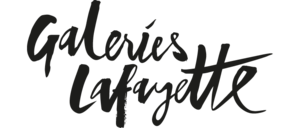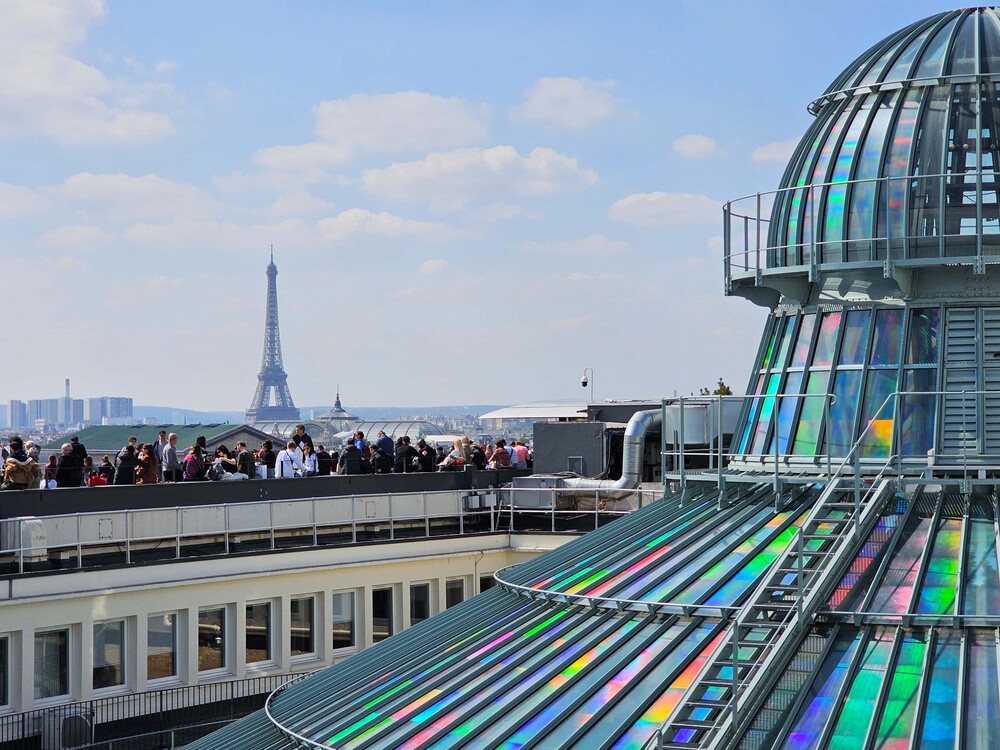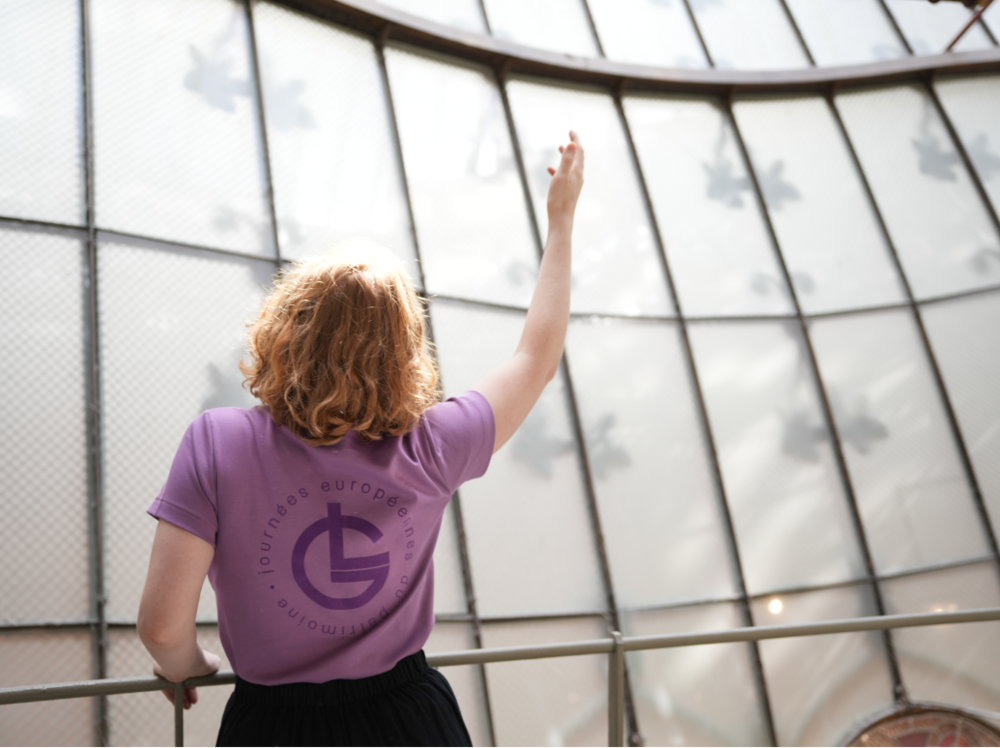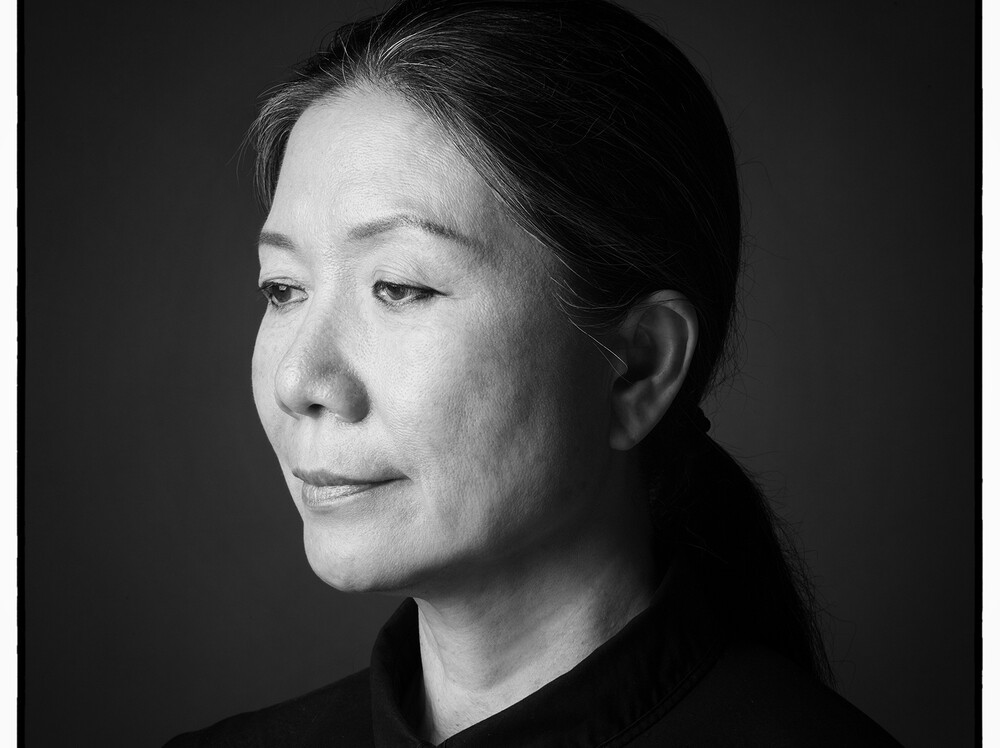Could you tell us more about the invitation made by Galeries Lafayette: what attracted you to this project?
When I saw the dome for the first time from the interior of Galerie Lafayette, I was stunned by the magnificent and glaring beauty of it. It was perhaps one of the most beautiful domes I’ve ever seen as a glass structure. As an artist, I was intrigued by its perfection, and at the same time, I knew it would not be an easy task to add anything extra to it. However, the more I was contemplating on the condition of the dome with the magasin underneath, I realized that both elements could not go together, especially the visual and sonic noise that come from the store and many visitors on the ground level. That is why I was inspired to activate this unique spatial condition to the public for the first time when you opened to discuss the terrasse space between the two domes.
The installation To Breathe at Galeries Lafayette is the first of its kind in Paris. Could you tell us about your unique relationship with this city?
Ever since I visited Paris in 1984 for a 6-months scholarship at Ecole des Beaux-Arts in Paris, I’ve fallen in love with this fascinating city and have revisited Paris almost every time I’ve traveled to Europe. It is the city where I feel my true self more than any other cities in the world. I enjoy the beauty of the city, sophisticated lifestyle, passion for art, the historic memories that are kept in monuments. At the same time, your own solitude in this city makes you aware which urges oneself to be more introverted. It is my great pleasure and honor to present To Breathe, in my beloved city of Paris for the first time, especially with the unique and magnificent dome of Galerie Lafayette and share it with Parisiens and more.
For 30 years, your work has highlighted the object of the bottari, which you have since transposed to the scale of places through the works To Breathe. Could you tell us about these ‘bottari of light’?
It was with To Breathe-A Mirror Woman in 2006 at Palacio de Cristal of Reina Sofía in Madrid when I first conceived the architecture as a ‘bottari’. This attempt was to wrap the surface of the building with diffraction film that can be considered as a fabric of light and it can diffract the exterior lights into the interior space with iridescent lights when the light hits the thousands of the vertical and horizontal scratches on the film. Without putting any object but the mirror floor, the sound of my breathing, and wrapping the entire surface of the glass windows around the Palacio de Cristal, the void of the interior space was pushed all the way to the skin of the building like bottari wrapping. Since then, I have realized several installations such as the Korean pavilion for the Venice Biennale, The Chapel in Yorkshire Sculpture Park in the past years.
With To Breathe, you ‘wrap the places in light’ to reveal their architecture and their stories. What did you want to reveal in this emblematic building, which is both a place of commerce and a historical monument?
I was not willing to engage or reveal the interior of the magasin, rather I wanted to avoid it due to its conflicting elements of mass public, its visual and sonic conflicts against the sanctuary-like main dome and its grandiose beauty. Instead, I was
intrigued by the circular space of the terrasse in-between the two dome skins. And I wish to experiment the diffraction possibilities when people walk around the space. It will cast the iridescent light spectrums in two opposite directions: one from the diffraction, the other from transmission from the double dome on the rooftop.
You invest the dome with a film that diffracts light into a spectrum of colors, creating unique environments. Light and color have always played an important role in your work: could you explain the special relationship you have with them?
Since late 70’s, I’ve been fascinated by a Korean term 'Obangsaek' and its color spectrum theory which is originated from Chinese Taoism, Confucianism, and Buddhism. It is a term for five cardinal color spectrums that indicates Center (yellow), North (black), East (blue), South (red), West (white). It equally signifies its specific character of ‘Matters’ of the universe such as Earth (yellow), Water (black), Wood (blue), Fire (red), Metal (white). It can also represent seasons, and different tastes as well. As I’ve been so much into investigating the inner structure of the world and matter, this Obangsaek theory gave me a great resources for fundamental elements to expand and deepen my perspectives on universe. This Obangsaek spectrum related practice was tied to the Korean traditional fabrics and garments and its ceremonial meanings as well. My gaze to the inner structure of things, and human mind naturally made me to experiment ‘transparency’ of things since late 70’s, and allowed me to discover and apply diffraction film for the first time in 2006 on the occasion of A Mirror Woman installation at Cristal Palace of Reina Sofía. This diffraction film can function as a transparent textile (consists of thousands of vertical and horizontal scratch lines similar to warp and weft) and also practice to diffraction film as ‘wrapping’ the architecture. This long process allowed me to extend my notion of color into light, and taking light brush for my own painting.
Your works have a strong meditative dimension: visitors must be attentive to their environment to experience them. How do you create such an experience in a place that receives 100,000 visitors from all over the world every day?
I guess people are attentive when they encounter a new environment and an unusual visual and sonic experience. One interesting thing is that the light spectrum changes all the time – its intensity, direction – based on natural light source based on the weather each day, and the time, and the seasons, so that audiences can experience the different installation and the transitional moment, at times feeling of bless or transcendence that can transport their status of mind to a different levels. Perhaps the key of the installation is ephemerality of lights.
This installation offers different points of view, visible from the terrace but also in the whole department store. What route will you recommend to visitors?
It would be good to start from the main magasin platform to view the dome first although it might not give full spectrum depending on the time and the light condition. At least people may have a glimpse of the iridescent light spectrum from a part and give understanding of the upper level light sources. I don’t expect audiences to experience the full spectrum of the installation here, as I said I didn’t wish to engage this inner magasin space as my main focus. Secondly, when they enter the terrasse of the first dome, I would recommend to walk around the full circle of the terrasse to experience different light experience depending on the time of the day; its directionality of the lights, and the reflection around the first skin of the dome and the surrounding glass structures. Here is the place where people will have an interiorized extended experience with the sound of breathing and humming around the space. Lastly when people go up to the rooftop, with a vast open view of the cityscape of Paris, they can have a deep breath and view the light sources that are bouncing back towards them as if each units of the steel dome structures are color palettes, especially when the light is intense and the angle is right.
You wanted to create a more confidential space between the two domes, accessible to the public during tours. Accompanied by a soundtrack, how this space is connected to the rest?
I am especially pleased with, and looking forward to this new installation within the terrasse which is in-between space of the double domes and its unique opportunity to offer a durational promenade around the circular terrasse around the dome. This space will receive the transmissive lights from the upper dome from the rooftop, but also show the reflection from the skin of the main dome. So this will be the most exclusive area audiences can experience among three points of view. Viewing diffraction and reflection lights, hearing breathing sound during the promenade. I’d never used any space like this before so it will definitely be a unique opportunity.

















